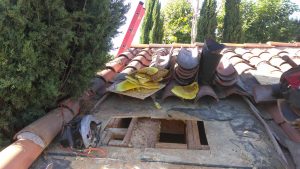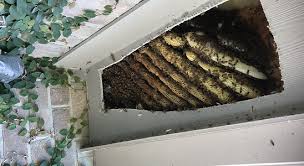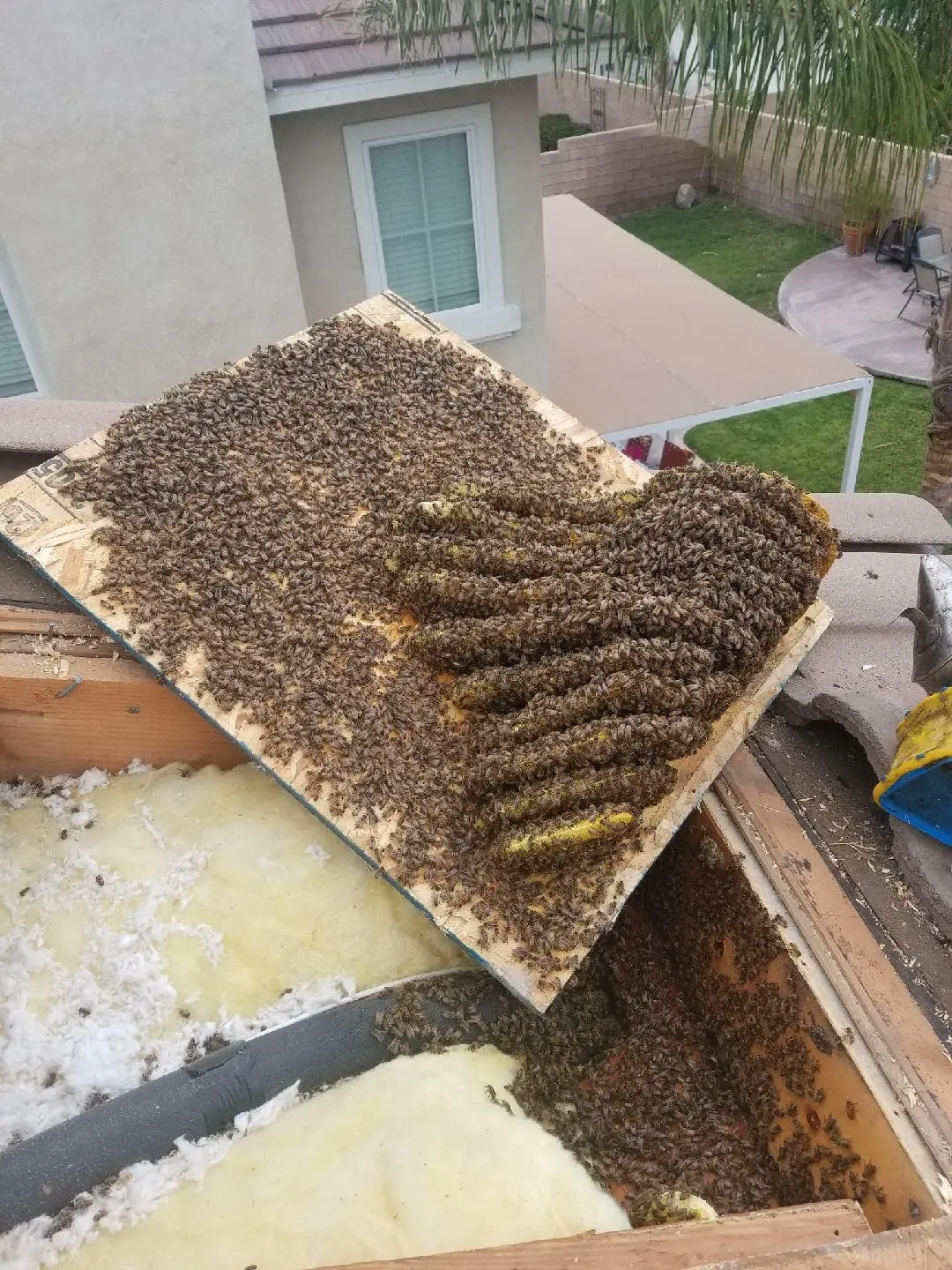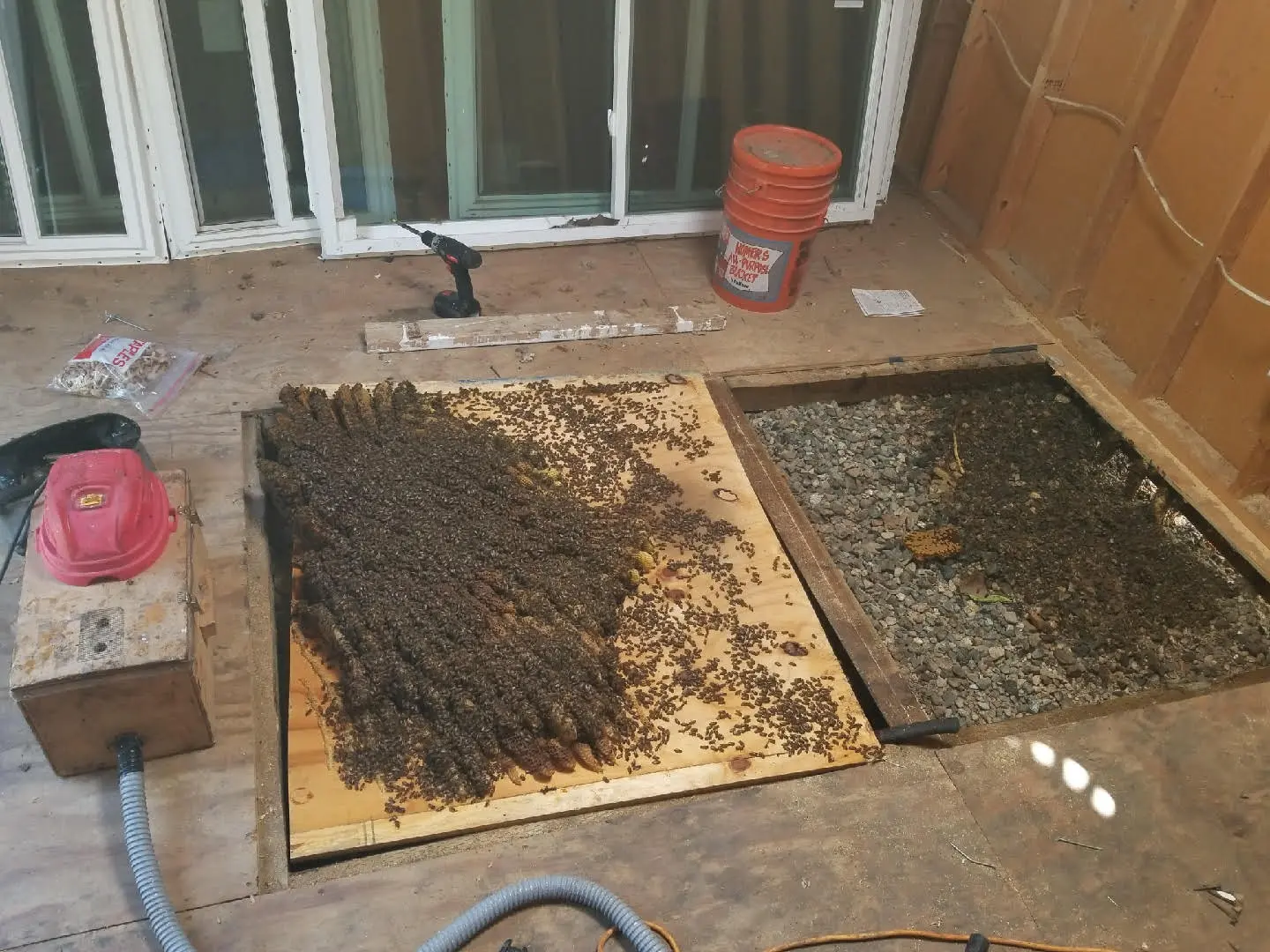Structural Removal And Repair
Examples of Beehive Removal From Inside A Wall Of A House
5 points to consider about honey bees in a structure
When deciding on the best course of action for honey bees in a structure i.e to leave or to remove the honey bees, one should take into consideration the following
- the build up of bee detritus, and the consequent potential damage from secondary pests
- that within two years the bees will start swarming, and the colonies genetics will change over time and therefore their temperament will change over time
- a honey bee sting is life threatening to some: any sting after the first can cause Anaphylaxis
- honey leakage
- secondary honey bee infestations
What ever the circumstances of the bees in your property we have a suitable solution and methodology for their removal & relocation.

HOW DO I KNOW IF I HAVE TO OPEN MY WALL OR ROOF?
When bees find their way into the roof, wall, or chimney of a home, they are likely to build a hive over time. It is crucial to address this issue promptly to minimize costs. Determining whether there is a hive and its size is vital in deciding whether the wall or roof needs to be opened. Many companies offering bee removal services, such as pest control companies, lack knowledge about the duration it takes for a beehive to form. They often attempt to remove the bees without confirming the presence of a hive, resulting in the bees' repeated return. Understanding the timeline of hive formation is essential.
WHATS THE BEST WAY TO REMOVE A HIVE FROM A STRUCTURE?

Bee Hive In The Wall
Hives can be found in various types of walls, including brick, wood, and stucco. To remove a hive safely, it is recommended to open up the wall from the exterior. This is because entering through the drywall can pose risks to the interior of the home. Beehive removal is a messy process, and technicians in bee suits may accidentally track dirt inside the home. There is also a risk of bees entering the home during the removal. To mitigate these issues, plastic liners are used to protect against dirt, honey, and bees inside. Additionally, repairing the drywall often requires paint matching and sometimes texturing.

Bee Hive In The Roof
When a hive is located in the roof, it is typically found in the attic or a crawl space. The preferred method to remove these hives is by opening the roof from the outside, but many homeowners are hesitant to do so. Instead, they often request removal through the attic. However, this approach comes with several risks and drawbacks. Firstly, entering the attic crawl space is dangerous due to unstable footing, which can result in accidental falls and damage to the ceiling, electrical wires, or water pipes. Additionally, attics are extremely hot, and when combined with the bee suit worn by the technician, there is a risk of heat stroke. In some cases, accessing the hive from a crowded corner of the attic becomes impossible without a highly skilled and flexible technician.

Beehives Under The Floor
Hives located under a floor or porch are commonly found in crawlspaces beneath the house or deck. Homeowners often request hive removal from these spaces, but it is not the most effective method unless there is enough room to stand up. The best approach is to remove the hives from above. Working beneath the hive is challenging due to limited movement and the risk of honey dripping on the technician. It is difficult to scrape and handle the combs in such a confined space. Proper positioning above the hive allows for better control and reduces the risk of honey damage to the structure.
We Repair Your roof, Wall or Ceiling From Bee Swarm Damage
APA Bee Removal understands the destruction a bee colony can cause. After safely removing the honey bees from your home, our bee removal experts can handle any repairs that may be needed. Don’t let a honey bee infestation affect your home any longer. APA Bee Removal will assess the damage the honey bee colony has made to your home and provide you with an estimate for the needed repairs. APA Bee Removal bee removal repair experts will make you feel as if the honey bees were never there,repairing any damage and also offer a guarantee on our repairs against future leaks.
The Most Common Questions
If a beehive is left behind, the smell of it will attract bees back to the area for years to come. If a typical size beehive is abandoned and is located in an attic or wall, once the bees have departed, the honey will completely melt out of the comb and will destroy drywall, stucco, siding, paint, etc. The abandoned beehive will then attract other pests such as ants and rodents.
We always try to remove bee swarms live. The following list are attributes of a bee problem that allow us to remove the bees in a humane way.
1. The bees are not aggressive and in swarm or early hive formation.
2. The bees are easily accessible and are clustered out in the open and not inside a structure.
3. We are able to place them with a beekeeper in our Network.
We perform exceptional bee removal repairs. With over 20 years of construction experience, by the time we are done with any structural repairs from your bee removal, you wouldn’t even know you had a beehive.
The cost of bee removal varies depending upon a number of factors. There are three main factors that can effect the cost of a job.
1. The first is the length of time the problem has been going on. If you have a swarm it is less expensive to resolve than if you have a hive. A swarm is a collection of bees that has just landed and is looking to build a hive. A fully established hive can be built in only a couple weeks, so fixing the problem quickly (before the swarm has built a hive) is much less expensive than if a hive has already been established.
2. The second factor that influences the price of a job is where the bees or hive is located. Is it in a tree at eye level that is easy to get to? Or is it 25 feet up in a palm tree? Does it require a ladder? Is it on a hillside or up a steep slope? Do you need to crawl under a structure to get to it? Do you need a boom lift or heavy equipment to reach it? All of these factors dictate the difficulty and price of the job.
3. The third main factor is what materials and tools will be needed to remove the hive? Is the hive in a 3nd story wood shingle roof or a single story Spanish tile roof? Are the bees inside an irrigation box in the ground where the lid can be lifted easily? Or are they inside a concrete wall that needs to be demolished in order to get to the hive? Are the bees in a stucco wall, a wood wall, or a type of wall that has special masonry? All of these examples can effect the cost of the hive removal.
As soon as you spray bees with chemical pesticides it kills the honeybees but the honey and honey comb are left behind for rodents and pests to feed on and contaminate the area with their droppings. Another reason is that more bees can often occupy the beehive and you have another live beehive on your hands. That’s why it’s critical that the entire beehive and honeycomb are removed from your property.
In the case of a Swarm, usually YES. A swarm of bees may stop to rest on just about anything during the migratory process and leave between 1 and 72 hours later. The swarming season occurs mostly during Spring and Fall, but it can occur at other times of the year as well. Established Colonies will NOT leave once they have set up housekeeping except in extenuating circumstances. Bees may choose various hollow cavities to set up colonies such as your roof, eaves, wall voids, water meter boxes, even a BBQ grill or a birdhouse. It only takes bees about 72 hours to start producing honey and combs once they move in.
Bees need water just like we do. They will gather at swimming pools, ponds, and water coolers in order to find it. Water-collecting bees are docile just as when they are foraging for pollen and nectar. Bees will also communicate to their colony where the best sources of water are so when they find a good spot they are likely to return repeatedly. The only way to rid your property of foraging bees is to take away the water or food source they are coming to. They will become discouraged and go elsewhere. This can be fairly easy with fountains and birdbaths, but not so easily done with an entire pool.
Bees are only dangerous when they are defending their colony: nest, honey and brood. They are not dangerous when foraging for pollen, collecting water, nor typically when swarming. This means that it is important to check the area around your home for wild colonies of bees, as they can be easily disturbed and will defend themselves. If you or your pets have been stung by bees and believe you are having an allergic reaction consult a health care professional immediately.
Unfortunately it can. Bees are very resourceful and can find the trickiest places to build their hives. If they are in your wall space or the crawl space in your house, we will need to gain access by cutting into the structure to effectively remove all remnants of the hive.
You can’t! It requires DNA testing and elaborate measurement tests in order to distinguish the two. The Africanized bee has hybridized with the more friendly European bees that beekeepers brought here first. These hybrids exhibit characteristics of both, and the behavior of a hive can drastically change without warning. Their behavior is NOT an accurate tool to determine whether they are Africanized! You should always just give all bees you encounter the respect you’d give any wild creature.
If you have any other questions call us at(626) 336-1373 or just click on the button below

